
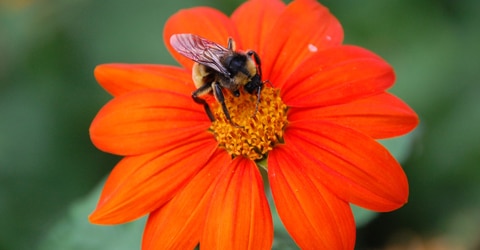
As a plant-based forager, I try my best to balance optimal health with environmentally sustainable practices. I don’t claim to be perfect, though I do try my best to live by the phrase, “Once you know better, do better.” I lived much of my life not-so-blissfully unaware of how my food made it to my plate, and I’ve spent the greater part of the last decade working to bring my diet in line with sustainable practices. I reversed a chronic illness and, at the same time, developed the incessant need to understand my food and its impact on my health and the health of the planet. In this spirit, I want to touch on an oft-debated subject in the vegan and plant-based community: honey.
With beekeeping up 45% over the last 50 years[1] and more and more people interested in helping the bees and pollinators, I thought this topic deserved a closer look based on the most current research. Now, I won’t go into whether the practice is ethical or not. According to The Vegan Society, honey does not qualify as a vegan product. I also won’t go into the health benefits of honey, only to say that you can substitute honey with molasses or date sugar, which are 35 times higher in antioxidants. This article focuses squarely on the question of the sustainability of honey produced in the United States with the help of the common honey bee, Apis mellifera. The honey bees we see today in the United States, and in the entire Western Hemisphere, are not native. Thus, my assessment of their sustainability is based on the western hemisphere, and my conclusions for sustainable practices in the United States would differ from sustainable practices for honey bees in South Asia, for example, where they are native.
While I have not consumed honey in over a decade, I know that pollinators are important and I thought that beekeepers may still be able to benefit the environment, even with the potential exploitation of the honey bees. Some beekeepers are more ethical than others, and I imagined I could find one who truly cared about the bees and tried their best to take only what the bees could spare. I didn’t see beekeeping as a big issue—that was, until February of 2021.
My advice: plant pollinator-friendly gardens, watch out for the bees that make their homes underground, and refrain from using pesticides that can harm bees.
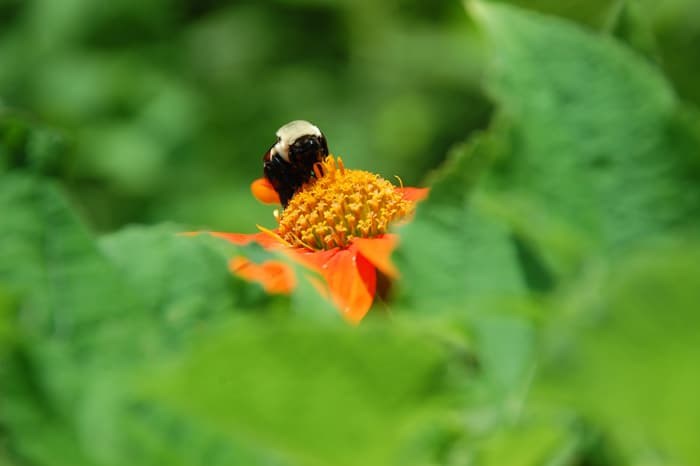
The first image in this article is what I believe to be the threatened American bumble bee, Bombus pensylvanicus. According to the USDA, “It is strongly suspected that the American bumble bee was infected with a virus when European bumble bees were imported into North America to pollinate greenhouse tomatoes.”[2]
Two recent studies published in the prestigious scientific journal Nature call into question the sustainability of the beekeeping practice in the United States. The studies are supported by decades of research into bee farming, but these two grabbed my attention and motivated me to share the message with a larger audience.
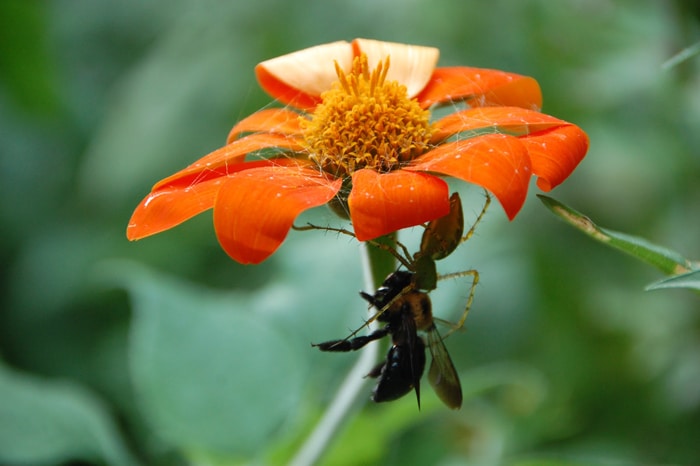
Green lynx spider with bumblebee dinner.
The first study, titled Honey bee hives decrease wild bee abundance, species richness, and fruit count on farms regardless of wildflower strips, caught my attention in February of 2021. The title doesn’t leave a lot to be imagined. Essentially, farms around the United States have begun to plant wildflower strips to attempt to increase pollinator number and species diversity. Researchers were curious as to how honey bees would impact the efficacy of these wildflower strips in increasing the yield of strawberries and squash. They looked at 21 farms across the Mid-Atlantic over a two-year period, and their results startled me. During the bloom, species richness increased in the wild strips, which eventually translated into higher yields of fruits and vegetables compared with farms without these pollinator-friendly ecosystems. However, when the researchers added honey bees to the wildflower strips, the results raised an alarm.
Regardless of whether a wildflower strip was present or not, having honey bees on the farm decreased wild bee abundance by 48%, species richness by 20%, and strawberry fruit count by 18% across all of the farms.[3] Winter squash was also consistently lower on farms where honey bees were present. The abstract concludes with the following:
“This work demonstrates that honey bee hives could detrimentally affect fruit count and wild bee populations on farms, and that benefits conferred by wildflower strips might not offset these negative impacts. Keeping honey bee hives on farms with wildflower strips could reduce conservation and pollination services.”
If the findings shared in that article weren’t distressing enough, I also found another study published in the same journal, Nature, with just as startling findings. This research was conducted in the tropical climate of the Canary Islands, and it shared a similarly dim outlook as the research in the Mid-Atlantic.
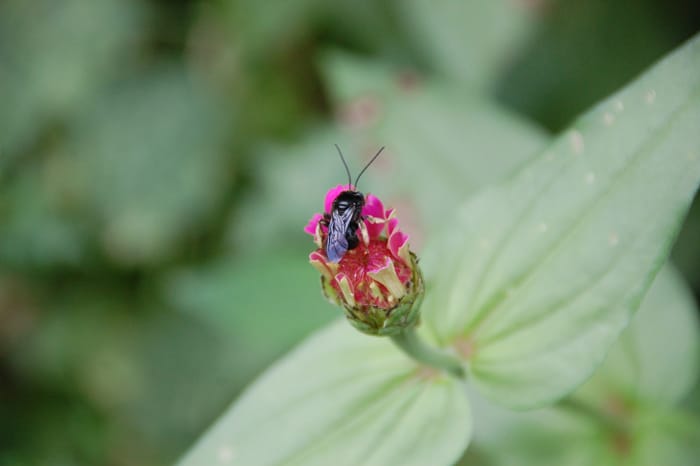
Melissodes bimaculatus, “Two spotted long-horned bee,” a solitary to communal ground bee.
This study, Honeybees disrupt the structure and functionality of plant-pollinator networks, was one of the first to attempt to ascertain the impact of honey bees on the environment through an experiment. The study followed beekeepers who installed up to 2,700 bee hives during the peak of spring bloom, a practice that did not start until 2008. The researchers compared the data from 2007 with the data post introduction to the honey bee (2008, 2009) and described their findings.
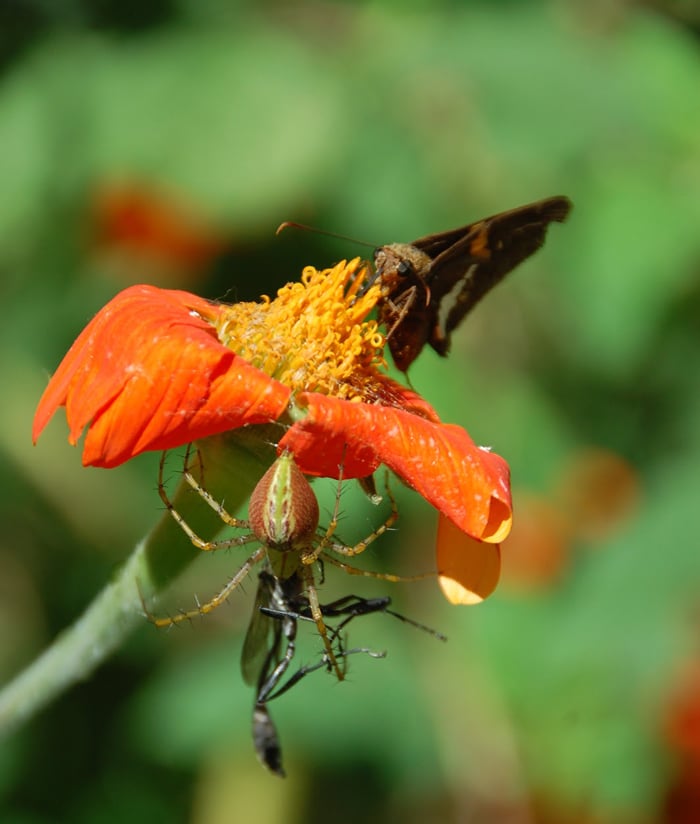
Pollinator diversity on Mexican Sunflower.
When the honey bee was introduced to the Cayman Islands, many native pollinators found it difficult to obtain sufficient nectar to maintain their population. The pollinators that were especially hard-hit were the generalists who “glued together different modules of the network.”[4] Beyond the harm to native bee populations, this change had tangible consequences for the native plants. The closer the plants were to the honey bee hives, the less fruit and seeds the plants produced. As researchers examined plants farther from the hive, more and more fruit began to appear, indicating that the honey bee hives were the likely culprit. While the researchers mention that these results were to be expected based on previous research in the field, they saw the introduction of honey bees as much more damaging than previously hypothesized. As we move forward, we might question how ethical it may be to conduct a similar experiment with the possibility that the experiment could jeopardize the native pollinator ecosystem. While future research is always appreciated, that research could cause harm to populations without honey bee hives.
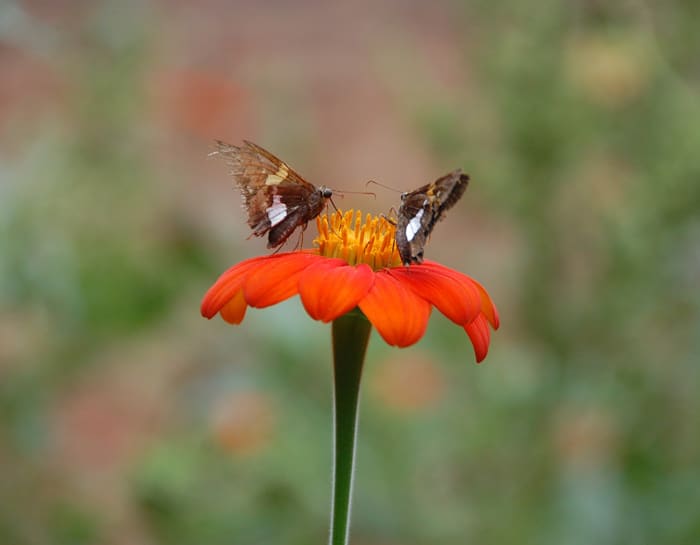
Silver-spotted skippers having fun pollinating.
With this said, I want to mention that the honey bees are still suffering, just as the native bees are. Do not hate the honey bees, but do consider that there may be other ways that you can help local bee populations. Also consider that farming bees for honey could harm the honey bees, could harm the native bees, could lower fruit yield, and could take time and energy that could be better directed toward other tasks.
My advice: plant pollinator-friendly gardens, watch out for the bees that make their homes underground, and refrain from using pesticides that can harm bees. Another way to help the bees is to simply do less. Generally we are not accustomed to doing less, but it can be as easy as letting your yard “go wild” or not building a beehive. Often, not doing anything can allow nature to heal. So, please, think of the bees, but especially think of the native bees and native pollinators.
When citing research to prove a point, I like to consider Whole by Dr. T. Colin Campbell. No one study can fully answer whether beekeeping is a sustainable practice or not. In this reductionist world, we cannot fully study every single possibility and come to generalized conclusions about any one topic. In truth, we will never see the whole if we only look at the parts. There is always room for more research on the matter, though research can cost a lot of money and may be impractical, or potentially unethical. Funding for certain topics that may harm the $7 billion dollar honey industry tends to be hard to come across. While these two studies are not enough to generalize to every single population in the Western Hemisphere, they raise questions that must be discussed if we truly wish to save the bees. Further, these experimental studies cite a larger body of evidence that seems to confirm their daunting findings.
All photos in this article are original by Josh Wayne.
Copyright 2025 Center for Nutrition Studies. All rights reserved.